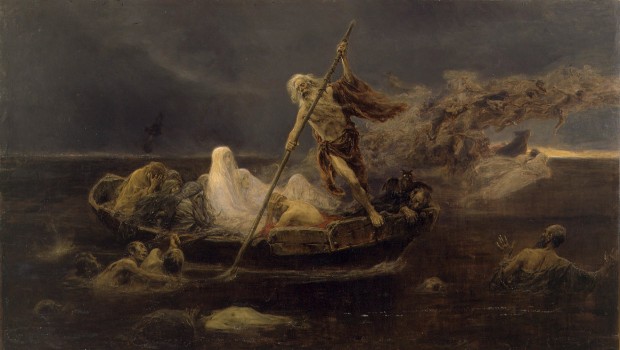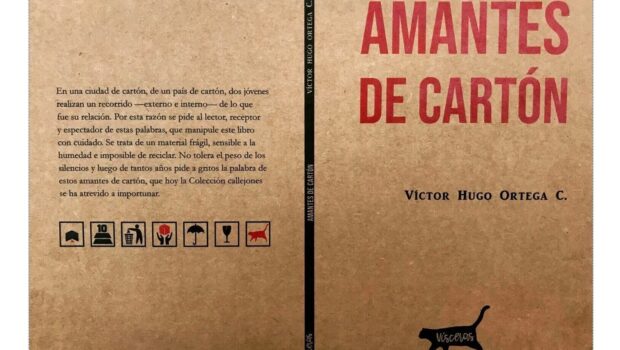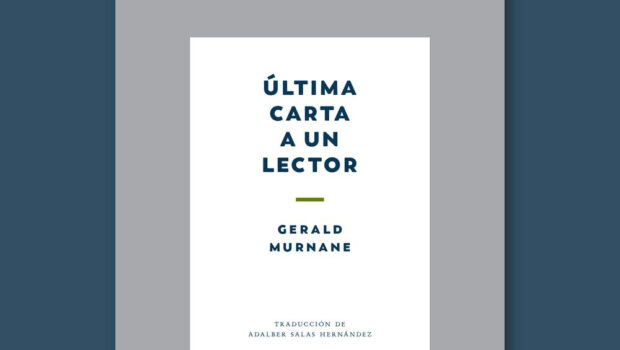Spaces in Between
Claudette Williams
 Rose Mary Salum: Spaces in Between (Entre los espacios),
Rose Mary Salum: Spaces in Between (Entre los espacios),
traducción de Debra
Andrist. Cooper Hands, 2006
Female Latin American authors are now well established as practitioners of short story writing. Their contributions to this genre have created a distinct category within the canon. Entre los espacios, Rose Mary Salum’s collection of twelve stories is a significant addition to this corpus. A striking feature of the work is the versatility of the author’s creative talent, demonstrated in her manipulation of different literary modalities. The stories bear witness to her mastery of the art of navigating within the short story’s time-space boundaries as each tale interweaves synchronic and diachronic views of human experience. In one of the shorter pieces,”De color arena” [The Colour of Sand] Salum deftly encodes the story of a life of hardship and material deprivation in the telescopically detailed snapshot of a disembodied and worn pair of hands. “Pa’ lo que me importa” [For all I care] presents the coming together in a single moment of past, present and future in the woman’s grieving over the death of her husband. As she contemplates the prospect of her two sons repeating the history of their father who died at the hands of kidnappers, her lament conflates acknowledgement of the suffering of past spousal abuse and retrospective admission of the benefits, both material and mental, of marriage. The expanding waves of the female narrator’s memory in “El cisne” [The swan], enable her to both recall ruefully moments in her personal history, and to inscribe a new meaning on the past from the vantage point of the present.
Since the second half of the last century female writers of the region have shown a tendency to transform or parody consecrated works in the male-dominated literary canon. Signs of such a disposition appear in this collection’s first story “Aguántame tantito más,” [Wait just a little bit more]. The story focuses on the proverbial plight of the poor rural Mexican. In both theme and stylistic economy it brings to mind a Mexican precursor, Juan Rulfo who published El llano en llamas (The Burning Plains) in 1955. The monologue of the unnamed single mother in Salum’s story expresses simultaneously her awareness of a history of neglect of the poor by the state authorities, her valiant struggle against the ruin caused by an implacably hostile physical environment, and her preoccupation with safeguarding the well being of her son in the midst of the nature’s devastation. Unlike Juan Rulfo’s representation of a similar reality in tragic terms, however, Salum’s tale allows self reliance, reliance on community, the will to endure, and the endurance of the nurturing maternal spirit to emerge as significant themes.
Its cynical allusions to religion also marks the collection’s Latin American pedigree. In “De color arena” [The colour of sand] the scepticism assumes a subtle tone: the praying posture of the owner of the pair of hands and the staging of the scene within a church are an ironic pointer to the futility of religious faith. In the case of “Pa’ lo que me importa.” [For all I care], however, undisguised heresy is fundamental to the outlook of the female protagonist whose antipathy towards her sanctimonious community and religious culture hardens in the face of her material tragedy.
Despite the foibles of the characters, their portraits are sketched with compassion. Disclosure of these frailties allows the reader to recognize the characters’ humanity. Salum’s creations are the products of their time, determined by their social and cultural circumstances. Prostitute and homosexual find a place in these stories alongside the more socially acceptable characters. The pragmatism motivating the mother’s grief for her dead husband in “Pa’ lo que me importa.” [For all I care] is mitigated by self-denying love for her sons which enabled her to suffer years of abuse at the hands of an alcoholic husband, and her failure to find solidarity with her hostile community. Embedded beneath the theme of the frailty of human life and the inevitability of death in “Siempre firmes.” [“Forever strong”], is the theme of homosexuality in Latin America where a high value is placed on fixed notions of masculinity. This ironic and poignantly tragic story, recounts the experience of an old man at the point of death who, in order to maintain his public image, has spent his life hiding his homosexuality behind a grotesque mask of machismo. His fear of embracing his “feminine” side leads to selfalienation, vitiating in the process his relationship with his “less-than-macho” son whom he tries to chide into denying his essential self. The criticism in this story is directed less at the old man’s intransigence and hypocrisy as an individual, and more at the cultural environment that tolerates no deviation from its rules of gender behaviour.
Some stories transcend a specific social context and embrace timeless metaphysical themes such as death, dream and desire. Others treat contemporary human and global problems such as the human dislocation that rapid technological expansion has caused (Entremés, entrada y despedida) [Side Dish, Entrée, Final Course] and the casualties of environmental degradation thematized in “Agonía de las estrellas” [Agony of the Stars]. Fashioned as an allegorical fable, the latter story laments the loss of a world of primeval innocence akin to the prehistoric world of Macondo in García Márquez’s novel One Hundred Years of Solitude. However, the apocalyptic outcome of the novel is averted in Salum’s story, and the end of the odyssey of the child-protagonist Shuang-lee promises the restoration of a Utopian past “when all creation was one.”
Gender-consciousness, now a hallmark of women’s writing almost universally, is a significant dimension of Salum’s fictional universe. Issues of gender simmer beneath the surface of many stories. Two points to note in the collection, however, are the absence of a strident feminism and the interest in projecting the gender theme from a male perspective. “Hasta que la vida me alcance” [Until Life Gets Me] places a commonplace heterosexual relationship in an unusual light. The scenario of the story is the union of a wealthy, sexually impotent man and a significantly younger prostitute. Making Adelaida into his Romantic idol, Pablo acknowledges and compensates for his sexual impotence and satisfies his desire for communication, for she, having tired of commodifi ed sex, appeases through him her yearning for respect, protection and paternal love. Salum has transformed their “aberrant” relationship into an acceptable arrangement of mutual convenience. In revealing alternately the consciousness of each character, Salum privileges the male perspective by using Pablo’s first person voice, while an omniscient narrator relays Adelaida’s thinking. Happiness and fulfilment, though translated differently by each, ensue for both. “Hasta que la vida me alcance” incorporates the title of the collection, invoking the interstices.
Entre los espacios promotes tolerance of difference and the notion of unity in diversity. This is the idea that is refracted through the theme of “El sueño de Odette” [Odette’s Dream] a story which proposes a bridging of the often overlooked divide between women who choose to play traditional roles, on the one hand, and their counterparts who choose a feminist path, on the other. Two women—a longsuffering traditional wife who depends on her husband’s love for selfvalidation, and her liberated, self-reliant modern sister—are the protagonists of this story. The latter, whose perspective controls the discourse in this story, is shown as non-judgmental in her compassion for and her acceptance of her younger sister’s posture. Sisterly love, in both literal and figurative senses, is celebrated as transcending erotic love in value and endurance. A corollary of the promotion of female bonding, it is implied, will be the displacement of conventional perceptions of such difference as divisive. To highlight this vision of female identity the author uses a strategy reminiscent of the short story, “Cuando las mujeres quieren a los hombres.”[When Women Love Men], written by Puerto Rico’s Rosario Ferré’s. The narration shifts surreptitiously from the monologic epistolary mode into a dialogue in which the voices of the two sisters become (con)fused and indistinguishable.
Its coverage of a wide variety of human experiences, situations, relationships and emotions also enhances the collection’s appeal. Another of its significant achievements is the dexterity with which the author has tailored the linguistic register to the narrative situation in each story. Discourse and theme complement each other. Salum moves with consummate stylistic ease from the Mexican vernacular in one story to the discourse of standard Latin in another. She draws on Latin America’s fertile narrative tradition, by incorporating the polyphonic narrative popularized by Peru’s Mario Vargas Llosa and other writers of the 1960’s, the fictional enigma of the kind created by Jorge Luis Borges and Julio Cortázar in their short stories, as well as the old-fashioned story telling modeto which female writers have returned since the later 1970’s. Some stories relate to the specific Latin American national context. These alternate with stories featuring characters of various ethnic backgrounds—Lebanese, Chinese, Russian —thereby insisting on the multicultural make-up of these societies. “Las voces del agua”[Voices of Water] is an example of how Salum has transposed an old Latin America literary convention on a new cultural reality. In the earliest tradition of Latin American literature costumbrismo or the literary expression of anthropological themes was based on the life of the Amerindian peoples, and was later associated with representations of the African-derived cultural ethos. Increased crossing of national borders in the twentieth century has made other ethnic groups and their culture important constituents of various Latin American nations. Salum incorporates the costumbrista method applying it to the new immigrant sector. The account of Lebanese tradition in “Las voces del agua” highlights the immutable patriarchal restrictions faced by Naidín, in her timeless quest for a self-constructed identity that befits her location in the contemporary world. In this way Salum has expanded her vision to encompass experiences and concerns which resonate beyond the boundaries within which the characters function. Her collection is an example of one of the directions of post 1960’s Latin American narrative. The heterogeneity that defines the substance, representational modes and worldview of this collection, as well as the sublimation of some stories to a mythical and allegorical plane constitute a clear ecumenical statement and places Entre los espacios comfortably within the space of postmodern narrative fiction.
Posted: April 9, 2012 at 3:57 am










